When it comes to honey, there are hundreds of different varieties to choose from. Two popular types you’ve probably heard of before are buckwheat honey and clover honey.
Buckwheat honey is made from the nectar of buckwheat flowers and has a dark color and rich flavor. On the other hand, clover honey is made from the nectar of clover flowers and is typically lighter in color and milder in taste.
Here’s an overview of their most distinct differences:
Buckwheat Honey
Floral Source
Buckwheat honey is a type of honey produced from the nectar of buckwheat flowers. Buckwheat, known as Fagopyrum esculentum by its scientific name, is a member of the Polygonaceae family, which includes plants like rhubarb and docks.
The buckwheat flower is small and star-shaped, most often white or light pink in color. The petals are delicate and slightly ruffled, and the center of the flower is filled with tiny stamens with pink tips (also known as anthers).
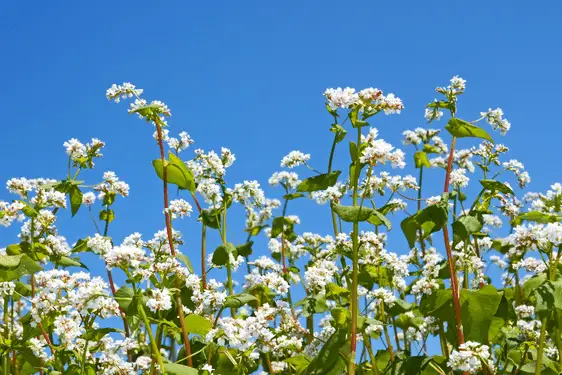
These flowers bloom during summer and grow in clusters at the end of the branches, producing a sweet and pleasant smell. They are attractive to many pollinators, including honey bees, and are often used as decoration in flower arrangements and bouquets.
Color And Physical Appearance
Buckwheat honey is famous for its dark color, which usually ranges from dark amber to almost black. It is also known for its thick and dense texture.
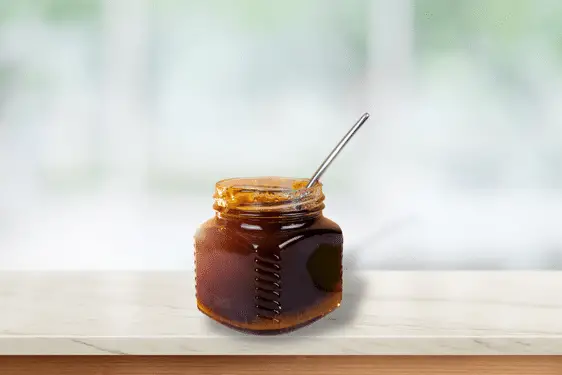
It is common to hear that buckwheat honey doesn’t crystallize as fast as other honey varieties.
This is consistent with this study on buckwheat honey’s carbohydrate content which showed higher fructose to glucose content.
If you’re not familiar with why honey crystallizes, it’s primarily because of the amount of glucose present. Glucose is not as soluble in water as fructose, so honey with higher glucose content will form glucose crystals faster, depending on other external factors such as temperature.
Taste
Buckwheat honey has a strong, distinct flavor that sets it apart from other types of honey. It is often described as having strong malty and rich molasses notes and being slightly bitter instead of overly sweet.
When buying buckwheat honey, look for a product that is unpasteurized and harvested from local beekeepers. This will ensure that the honey is fresh and has maximum flavor.
Health Benefits
Buckwheat honey has been recognized as highly nutritious and beneficial to your health thanks to the phytochemicals found in buckwheat.
Compared with other honey varieties, buckwheat honey has shown higher antioxidant activity and phenolic content (chemicals produced by plants with positive health benefits).
Several studies have shown the potential of buckwheat honey to soothe a cough, kill bacteria (including those resistant to antibiotics), assist in wound healing and regulate the microorganisms in your gut by promoting the growth of probiotics.
Clover Honey
Floral Source
Clover honey is made from the nectar of clover flowers (Trifolium genus).
Clover is a common lawn weed that grows in many parts of the world, and it’s popular for its famous small, trifoliate leaves.
Gardeners often consider clover a nuisance, but the plant has numerous redeeming qualities. For example, clover is a legume that helps fix nitrogen in the soil. This makes it an excellent cover crop for farms and gardens. In addition, the plant is relatively drought-tolerant and can help prevent slope erosion.
Clover flowers attract many different insects that help with pollination, like butterflies and honey bees. Even though there are more than 200 species of clovers, the most common types have white or pink flowers (known as Trifolium repens and Trifolium pretense, respectively)
The leaves of the clover plant are soft and green, often used as a food source for grazing animals.
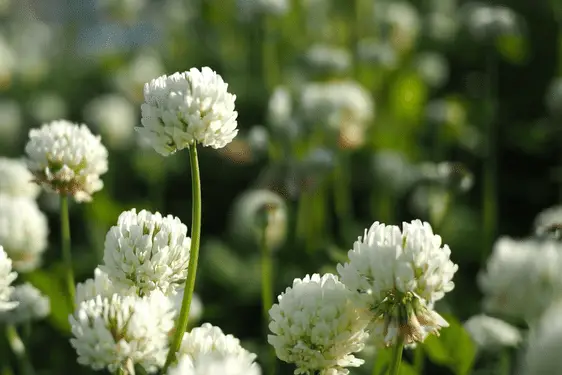
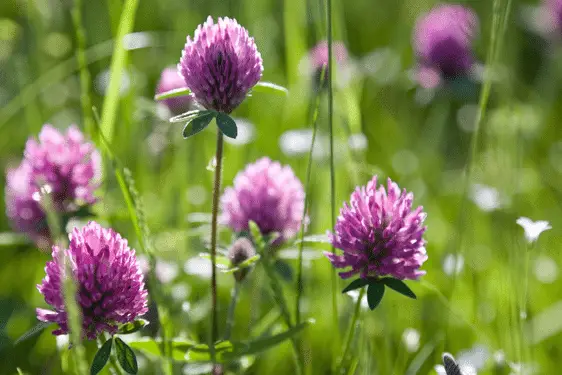
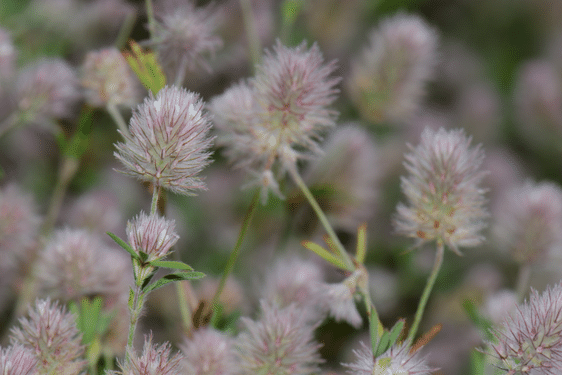
Color And Physical Appearance
Clover honey is very light-colored honey, often with a yellowish tint.
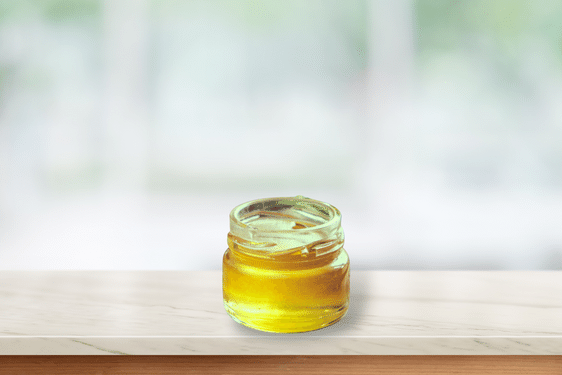
It has a lower fructose-to-glucose ratio (has more fructose than glucose) than other kinds of honey, like buckwheat. Therefore it tends to crystallize faster.
Taste
Clover honey is famous for its mellow, floral taste. It’s sweet without a strong bitter aftertaste.
Its mild flavor makes it a perfect sweetener, adding sweetness without significantly altering the taste.
Health Benefits
The clover species are known for their antioxidant and anti-inflammatory effects.
Different cultures have used these plants medicinally throughout time. For example, some species of clovers, such as white clover, red clover, and Hare’s-foot clover, have been used in Turkish folk medicine for their expectorant, analgesic, and antiseptic properties.
Eastern and Western cultures have also found uses for the clover species, specifically the red clover. Native Americans highly valued red clover for treating external skin conditions and lung, nervous, and reproductive system diseases.
More recently, Americans have also started to use it as a herb to treat skin problems and other health issues. The isoflavones in red clover can have a similar function to human estrogen but have milder effects. In other words, they have estrogenic properties and are thought to be beneficial in treating osteoporosis, cardiac risk factors, or breast cancer.
Given that honey bees harvest nectar from clover blossoms, it’s expected for these same potentially bioactive compounds to be present in clover honey.
Is Buckwheat Honey Better Than Clover Honey?
There is no clear winner between buckwheat and clover honey. Both are very different, and depending on your taste, you may prefer one over the other.
Buckwheat honey is famous for its rich flavor and dark color. So if you’re looking for honey with a distinctive flavor, buckwheat may be your best option.
On the other hand, if you are more interested in a versatile sweetener that adds a touch of sugar to your meals or drinks without significantly altering the flavor, clover honey is your winner.
Regarding health benefits, both buckwheat honey and clover honey have shown a variety of medicinal uses and beneficial properties to human health. However, studies have shown a positive relationship between the color intensity of honey and its content of phenolic compounds, which are responsible for honey’s antioxidant activity. The darker its color, the more flavonoids or phenolic content it has, and the higher the antioxidant activity.
Whether you choose clover or buckwheat honey, one thing is certain – storing honey for more than 6 months will decrease the antioxidant capacity of both types.
A 2006 study showed that the antioxidant capacity of raw clover honey decreased by 32% and 49% in raw buckwheat honey after 6 months of storage.
Interestingly, processing clover honey didn’t significantly impact its antioxidant capacity. However, the same can’t be said about buckwheat honey. Processing buckwheat decreases its antioxidant capacity by 33.4%.
